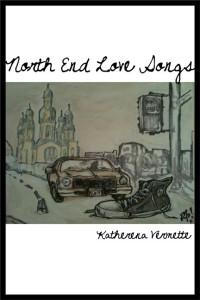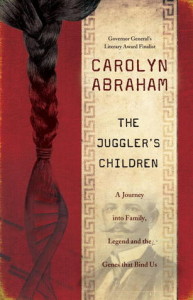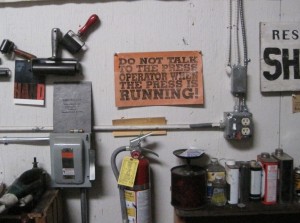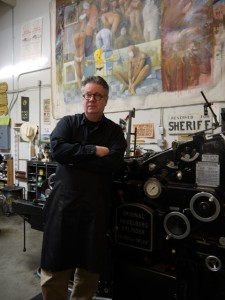 I'm guessing most Americans are unfamiliar with the term "GGs", but to Canadians it's shorthand for the pinnacle of Canadian literary awards. The Canada Council for the Arts announced the list of finalists for the 2013 Governor General’s Literary Awards yesterday. The GGs are awarded in both official languages, in seven categories: fiction, poetry, drama, non‑fiction, children’s literature (text and illustration) and translation. And this year, the finalists for this prestigious award are outstanding.
I'm guessing most Americans are unfamiliar with the term "GGs", but to Canadians it's shorthand for the pinnacle of Canadian literary awards. The Canada Council for the Arts announced the list of finalists for the 2013 Governor General’s Literary Awards yesterday. The GGs are awarded in both official languages, in seven categories: fiction, poetry, drama, non‑fiction, children’s literature (text and illustration) and translation. And this year, the finalists for this prestigious award are outstanding.
“Get ready for late nights!” said Robert Sirman, Director and CEO of the Canada Council for the Arts. “Great books abound among this year’s GG finalists and you won’t be able to put them down. Further proof of the prolific and potent Canadian literary scene.”
Which is exactly what you'd expect the top administrator of Canada's top arts organization to say, except in this particular case he's correct. Here are a few highlights from the English language list:
In the fiction category, there's Joseph Boyden's latest novel, The Orenda, (which is also a nominee for the Scotiabank Giller Prize). It is a 500-page epic full of blood, beauty and magic set in Canada’s earliest days. The Toronto Star calls it a "sweeping and ambitious new novel" set amid the 17th-century clashes involving Jesuit missionaries, the Huron and the Iroquois that marked Canada’s early beginnings. Boyden, who has Irish, Scottish, and Métis roots, says this particular story has been inside him waiting to be told for so long that it is “part of my DNA.” Click here to read a review in the Toronto Star and listen to Boyden read from The Orenda.
 Boyden is no stranger to accolades. His first novel, Three Day Road, received the Rogers Writers’ Trust Fiction Prize, the Amazon/Books in Canada First Novel Award, and the McNally Robinson Aboriginal Book of the Year Award, and was shortlisted for the 2005 Governor General's Award for Fiction. His second novel, Through Black Spruce, the second in a trilogy he started with Three Day Road, won the 2008 Scotiabank Giller Prize.
Boyden is no stranger to accolades. His first novel, Three Day Road, received the Rogers Writers’ Trust Fiction Prize, the Amazon/Books in Canada First Novel Award, and the McNally Robinson Aboriginal Book of the Year Award, and was shortlisted for the 2005 Governor General's Award for Fiction. His second novel, Through Black Spruce, the second in a trilogy he started with Three Day Road, won the 2008 Scotiabank Giller Prize.
Unlike Boyden, Metis-Mennonite poet Katherena Vermette is a fresh face on the list of GG finalists. Her debut collection North End Love Songs combines, according to a review in Prairie Fire, "elegiac and fiercely ecstatic melodies to sing of a complicated love for a city, a river, and a neighborhood. It is deeply rooted in its location, yet will reach out to readers everywhere with its harsh and beautiful tunings of growing up female in Winnipeg’s North End."
Vermette already won one award this year, the 2013 Lina Chartrand Poetry Award for her activist poems,” blue jay”, “red bird” and “cedar wax wing” (published in V.35 Issue 1 of CV2). The Lina Chartrand Poetry Award award was created to recognize an emerging poet as a tribute to the spirit of activist-poet Lina Chartrand’s life and work, and to celebrate women’s achievements in writing. (Click here to watch/hear Vermette read from North End Love Songs.)
 Like many Canadians, Carolyn Abraham is an immigrant. Born in England, she moved to Canada with her family in 1972, bringing with her a fascinating family history ripe for the telling. It this that fills the pages of her second book, The Juggler's Children, a stunning book about tracing her family’s history through DNA analysis. According to a book review in the Globe and Mail, "The Juggler’s Children is many things, each one spellbinding: a thrillerish quest for origins, a continent-spanning travelogue, and an eye-opening foray into the annals and ethics of genetic science."
Like many Canadians, Carolyn Abraham is an immigrant. Born in England, she moved to Canada with her family in 1972, bringing with her a fascinating family history ripe for the telling. It this that fills the pages of her second book, The Juggler's Children, a stunning book about tracing her family’s history through DNA analysis. According to a book review in the Globe and Mail, "The Juggler’s Children is many things, each one spellbinding: a thrillerish quest for origins, a continent-spanning travelogue, and an eye-opening foray into the annals and ethics of genetic science."
It should come as no surprise that Abraham uses DNA to help unravel the mystery of her family story: She was a medical reporter for many years, which led to her first book, Possessing Genius: The Bizarre Odyssey of Einstein’s Brain, a finalist for the 2002 Governor General’s Award for Non-fiction.




